Jonathan Groff came, he saw, and he reprogrammed.
The Emmy Award nominee returned to the big screen this week as the new Agent Smith in The Matrix Resurrections, and he took over the role with a splash — reinventing the character even beyond what the movie wanted him to be, and making a bold statement about his film career.
SPOILER ALERT: This article contains major spoilers for The Matrix Resurrections, in movie theaters and streaming on HBO MAX now.
Resurrections sees Groff introduced as Thomas Anderson’s (Keanu Reeves) business partner in uber-successful gaming company Deus Machina. He’s a nameless “tech bro” who casually lights up a cigarette in his polished office while he lays down the law to his listless colleague — and spells a lot of stuff out to the audience.
But thanks to the trailer, audiences already know that Groff’s character is the rebooted (or is that resurrected?) Smith. The Mindhunter star even gets to joke about it later on, quipping that he’s come back “even more perfect” but also asking if his piercing blue eyes are a bit too much.
Groff doesn’t just unlock Smith from his decades of dormant status. He manifests the full potential of the ex-Agent and transforms him into a full and lively character, one who has an incredible personality and more depth than he’s ever been given before. He brings his uniqueness to a role that’s supposed to be about maintaining the status quo, and the counterintuitive combination is fascinating. By the time the credits roll, Jonathan Groff has completely changed the way we look at Smith — and has finally set him free.
Phase 1: The Partner.
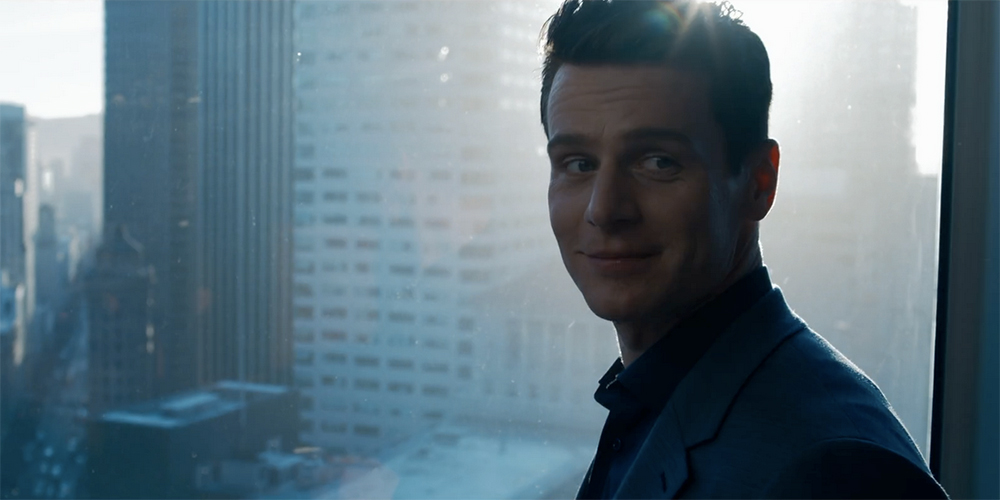
Smith’s reintroduction in The Matrix Resurrections is a bit genius. One wonders if this approach was in the script to begin with when Hugo Weaving was supposed to reprise the role or if Smith’s story arc was reshaped when Groff was cast. If it wasn’t, Groff does a marvelous job of selling what feels like it was written for him.
There’s a lightness to his version, a self-deprecating quality that plays right into Groff’s natural effortless charm. Weaving was brilliant in Smith’s original form, but it’s difficult to imagine him having the same enthusiasm or being quite so plausible as the co-head of a successful video game company. There’s a bit of a nod to this when Smith says Thomas described their first meeting as having “all the chemistry of an FBI interrogation” — it’s not only a chance to show an old scene from The Matrix, but an acknowledgment that a new tone is needed.
After all, the fabricated backstory here is that these two characters have been side by side for years, going back to the mid-90s. There’s an underlying upset toward Groff’s character that is suggested by The Analyst (Neil Patrick Harris) shortly after this scene, but logically it can’t always have been that way. They had to like each other at one point. They had to trust each other at one point. It’s easy to trust Jonathan Groff.
The Matrix Resurrections doesn’t have space to explore that history but one wishes that it did. There’s so much to mine there, character development-wise. We know that both characters were suppressed by The Analyst when he recreated The Matrix so they’re both in the same predicament. They both have decades of experiences that they share, and that tension between them is a very cool sticking point. It probably wasn’t engineered that way; The Analyst would presumably want things to operate as smoothly as possible. Therefore it stands to reason that their conflict evolved naturally — an organic manifestation of the fundamental truth that these two can never coexist completely.
But what caused that wrinkle? How did that relationship evolve, or devolve, depending on how you look at it? And as Thomas had Jude (Andrew Lewis Caldwell), did Smith have outside relationships, too? Did he need a minder? Could he have found any interests or aspirations within his psuedo-existence? There are so many questions about the character’s other life that we’ll never get answered. Layers that could not have been there if Groff hadn’t picked up the mantle.
The Tony nominee’s arrival moment is unmistakably the sequence when Smith becomes self-aware and breaks his own illusion. It is on par with Robert Patrick’s introduction as the T-1000 in Terminator 2: Judgment Day, but with a bittersweet undercurrent to it, because Groff brings that human element where you feel a sense of loss. We can see and hear through his performance Smith’s fear and shock at the violence erupting around him. But once he lays eyes on that gun, Groff is masterful in the way he flips that switch. It’s that slight tilt of the head, the way his face tightens up, and of course that almost obligatory neck roll. It’s impressive how he completely drains the life from his eyes — there hasn’t been a look that killer since Robert Patrick as the T-1000.
What keeps this scene from being perfect is that The Matrix Resurrections fails him here. Warner Bros.’ choice to spoil Groff’s alter ego in the movie’s second trailer robs the fans of feeling the same surprise that Thomas does. And the filmmakers’ decision to keep cutting away from Smith’s transformation, as well as to insert archive footage of Weaving, keeps viewers from getting a full and complete appreciation of what Groff is doing. He’s always been a very subtle actor, someone who focuses on the little things, and it would have been much more impactful both viscerally and from an acting standpoint to let that moment play out to its completion.
If Resurrections had dared to defy its own code, to take a few moments of eerie silence in the middle of all that mayhem, and let us listen just to those fire sprinklers and then Groff shouting that iconic “Mr. Anderson!”, people’s blood would have run cold. And he would have emphatically earned that certain degree of fear from the audience later on. As it stands, Groff does a fantastic job with what he’s been given, turning a very clear villain into a character that we actually develop some affection for — if only for a limited amount of time.
Phase 2: The Enemy.
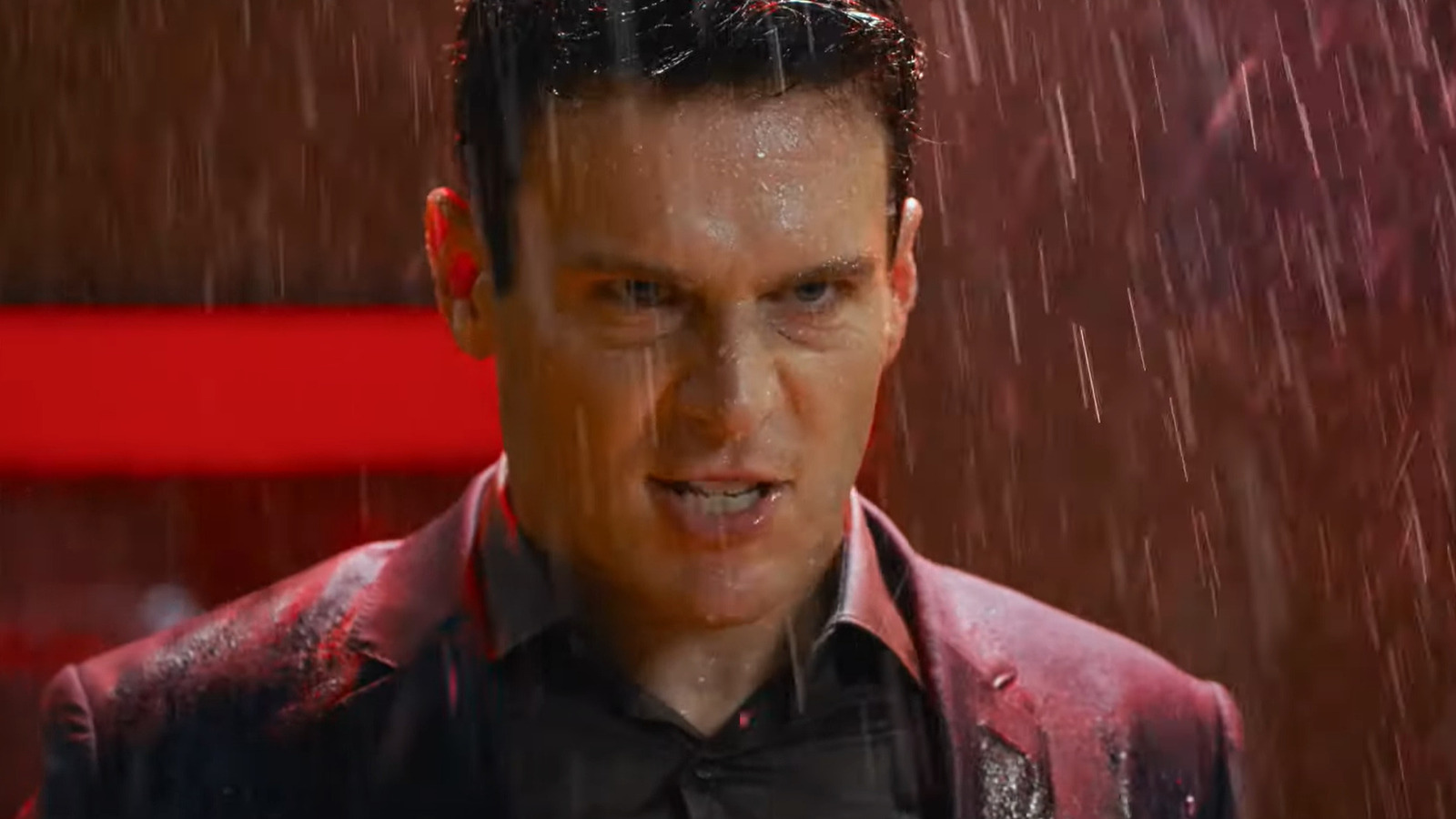
Once everyone knows that Smith is alive and smirking, Groff gets to go full bad guy, and there’s a lot of fun in that. Audiences have never seen him play a villain in his career, plus Groff’s established reputation works for him in this case. No one knows what to make of the guy from Frozen being an unabashed douchebag. (One wonders if Shepherd’s subsequent line, “This code is freaky. He’s like an Agent, but… not,” is another reference to how Groff doesn’t fit the mold in addition to foreshadowing. It could be both.)
Smith swans out of the movie for over an hour after his murder attempt, yet returns completely unruffled, like he just went off to pick up a few things at the store while Neo was catching up with all that Matrix canon. Here Groff has to play a bit of a cliche: the “bad guy casually shows up and delivers some pithy comment to the hero” beat. He also has to serve up more exposition by telling Neo how The Analyst used their bond to repress them both. Between this and getting the whole meta “back to the Matrix” speech before, Groff is handed a lot of explanatory dialogue, and yet he makes it all feel conversational because of his personality and the tone he can bring. Maybe it was those two seasons of Mindhunter playing an FBI agent explaining hostage negotiations and the psychology of serial killers. You can understand why Neo signals to Bugs (Jessica Henwick) to hear him out rather than immediately shoot him in the face.
What Groff has to say isn’t shockingly new; Smith has been declaring that Neo set him free going back to The Matrix Reloaded, where he also noted his belief in a higher purpose that bonded them together. It’s the way Groff says it and the way he carries himself. This is where the reason for the recast becomes particularly evident. If Weaving were still playing this role it’d be the same character saying the same thing he said 18 years before. Repetition. Processing. The same code. The words have no impact when they’re just deja vu.
Jonathan Groff is the living proof, per se, of the evolution in Smith. You can’t erase Groff’s own energetic vulnerability. He’s just too bright a spark. By him taking on the part there’s automatically more humanity within Smith. Groff is commendable for being able to put that aside when necessary — see the previous office sequence — but his take on the role brings it to life. He’s more relatable, more disarming, more fully realized. We can see in him an underlying chaotic energy that makes perfect sense with Smith’s arc of nearly taking over the world to renewed captivity to freedom again. The character’s had his own struggles, too, you know.
So when The Matrix Resurrections has him repeat the idea of Neo and Smith being two sides of the same coin, through a mid-fight monologue about binaries and choice, it feels different. It resonates more strongly because of the evidence in front of our faces, especially since Groff gets to affectionately refer to Neo as “Tom.” (He never breaks out the “Mr. Anderson” moniker again.) The familarity makes their renewed conflict that much more interesting, since we’re reminded that they’re invested in the same goal: freedom from the Matrix. They just can’t both be free.
So of course, the two have to fight because that’s what we expect. If the film had been “Neo and Smith team up against a new Big Bad,” we would’ve fallen into Terminator syndrome, where someone else really would have been doing a bad impression of Hugo Weaving. This battle is the crux of Resurrections, as it nearly kills Neo — but also brings him back to his full potential. He wouldn’t be able to take on The Analyst without going through Smith first, as Smith himself alludes to when he says Neo’s “not ready” for him yet. They are their best selves with each other.
But Jonathan Groff and Keanu Reeves don’t have all that history. This film is the first time Groff has been in any kind of fight sequence, and fans ought to be reminded what a tall ask that is for any performer. Fight scenes are crafted down to the last detail, requiring precision and trust by all involved. You can’t go halfway and once you’re in it, it’s like a runaway train. Reeves can do these kung fu moves in his sleep by now, yet Groff has clearly done his homework. There’s a fluidity to his movement that’s remarkable to watch and it’s obvious he’s fully in the moment. Groff doesn’t have Weaving’s height or size but that turns out not to matter because he makes up for it with total commitment. (And somehow still has perfect hair.)
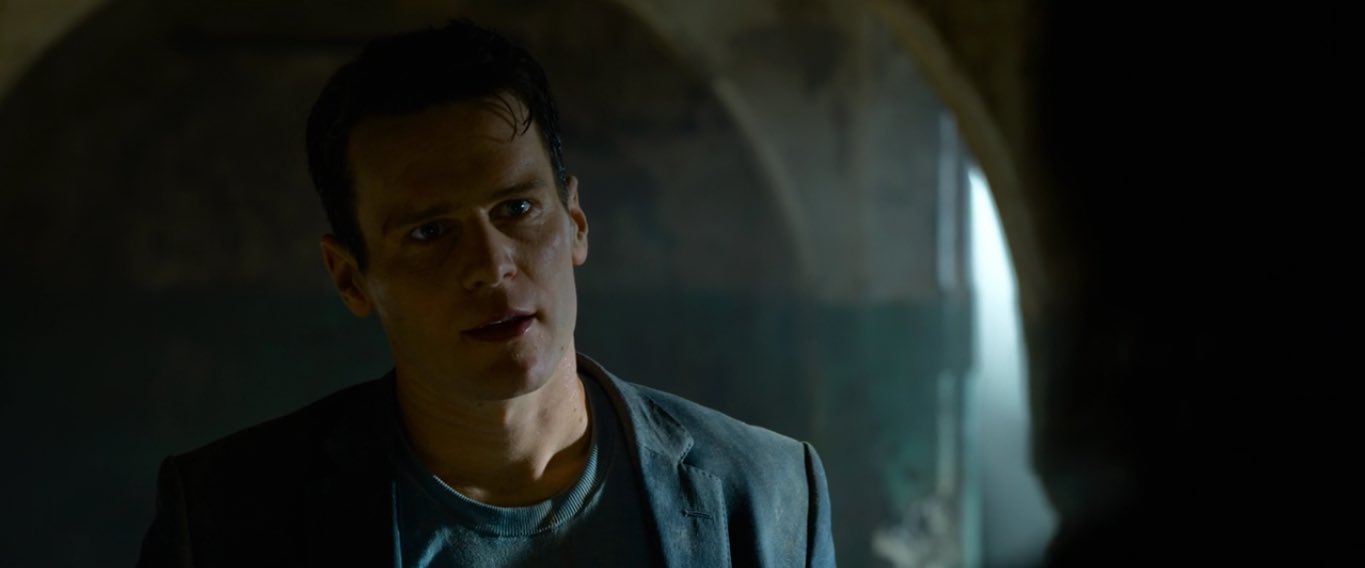
The Smith and Neo battle is critical because the fight is not just a fight — it represents a turning point for both characters. While Neo finally unlocks his complete power, this is where the audience gets proof that Groff’s version of Smith is still a threat and is worthy of both our fear and respect. In a warped way, the latter is what really comes out. We know that Smith has to get the upper hand on Neo because otherwise, he fails as a villain. At the same time, he can’t win the fight because then there wouldn’t be a rest of the movie. So there’s a balancing between him being terrifying and fallible. The way that Matrix 4 doesn’t undercut his credibility is that the fight still holds value for him even though he loses. Lana Wachowski and co-writers David Mitchell and Aleksandar Hemon take those pithy one-liners of fight dialogue — the ones that never make sense because if you’re really trying to kill someone, you don’t stop to talk about it — and use them for actual constructive purposes. When Smith says he feels bad about brutalizing Neo, we know he truly means it. And that is a step forward in and of itself.
Again, though, the edit holds everything back. The Matrix Resurrections has to move at breakneck speed, in addition to the movie breaking up the fight with more archive footage and more cuts back to other characters. The great details of Groff and Reeves’ fight aren’t fully appreciated because of how fast the camera moves and how often the film jerks away. Plus, at this point, the old scenes are unnecessary; we already know that Groff is playing Smith from the earlier flashbacks. To continue to have them is heavy-handed for the audience and somewhat of a disservice to Groff, in that they constantly remind us he’s playing someone else’s part. But when Resurrections is focused on him you can see the potential he has as a fighter.
Yet this turns out to be Groff’s only significant fight scene, as Smith simply vanishes from the movie again for some time afterward, resulting in a missed opportunity. Groff deserves more than one fight in a movie packed with them and Smith’s character momentum gets held up by the stops and starts.
But this all poses an interesting question: if Smith was the black suit, the agent of the machine (literally), and Neo is the representation of humanity, the white hat, what does that make Smith now that he’s got that extra dimension Groff gives to him? Jonathan Groff’s version of Smith is the grey area — which would seem to be the ideal. After all, the message of most of these types of sci-fi films isn’t that technology is always bad. It’s what humans do with it that changes it. If Groff’s Smith is truly between machine and man, then he’s more than the sum of his parts, both in terms of what he means to The Matrix Resurrections and literally.
Phase 3: The Ally.
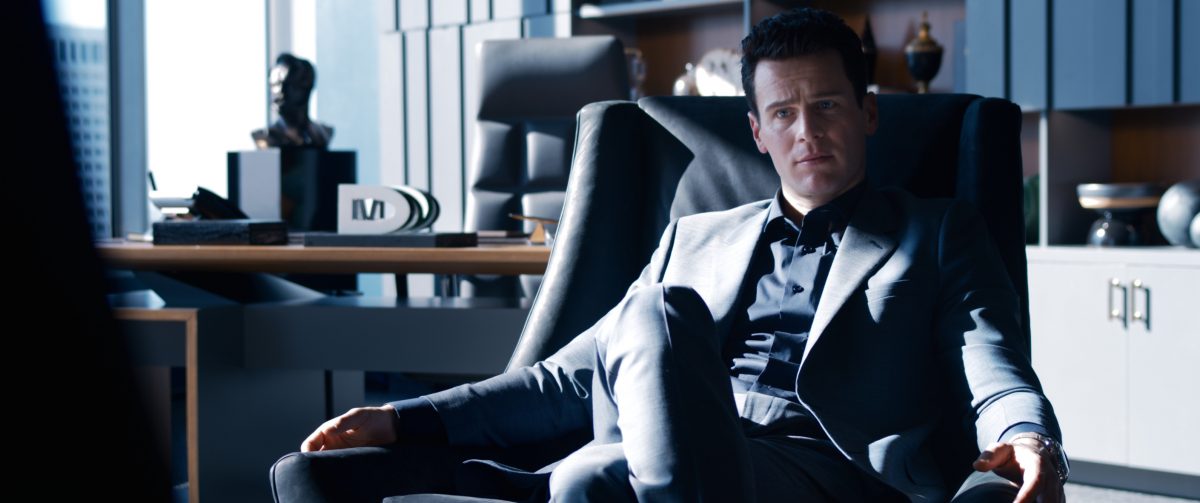
Jonathan Groff gets to spread his wings in the final third of The Matrix Resurrections, when the movie actually acts on all that philosophizing he got to do earlier — and reveals that Smith is actually on Neo’s side here. There’s a very satisfying eleventh-hour “a-ha” when Smith arrives and attacks The Analyst, turning the tide so that Neo and Trinity (Carrie-Anne Moss) can take down The Analyst’s forces and put the brakes on his new Matrix.
Smith’s return is absolutely foreshadowed. His one desire in Resurrections is to give The Analyst his comeuppance, after all, and creatively it makes zero sense to have him just be buried under some rubble off-screen in the middle of the movie and never come back. Groff still makes it a cheer-worthy moment, though, because of how deliciously perfect he plays the scene. From the smirk to the “f — k you” tone dripping off his dialogue, it’s not only clear that Smith is enjoying every second of this, he makes us enjoy it, too. When he lands that punch that sends The Analyst flying and starts all the commotion, it’s a thing of beauty.
There is briefly the tease of Smith stalking The Analyst to administer a much more personal beating, which would be his ultimate hero moment and all that he’s grown toward coming to a head. However, Resurrections chooses to deny him that accomplishment since in the film’s worldview he’s still a villain. The big victory has to go to the heroes, in this case Neo and Trinity, so Smith is beset upon by random thugs and his satisfaction is limited to shooting The Analyst a few times on his way out.
This wouldn’t be so disappointing if the film actually showed any of what leads up to the shots; there’s a curious self-loathing about Smith facing down other programs, and Jonathan Groff would’ve gotten one more chance to use his new fight skills. Instead his last hurrah is once again behind the trigger of a gun, which while fun in its own way, is nowhere near as impactful as actually giving Smith more than 15 seconds to test out one of those revenge fantasies. And if he’d done that, we could have gotten more of Groff’s acting talent as well, because if there’s ever a time for Smith to unravel a little bit, it would be in a moment that visceral.
But the potential for both actor and character is lost in the utter chaos that The Matrix Resurrections dissolves into. There are literally dozens of people on screen and there’s more frenetic, hyperstylized camera work trying to keep up with them all. Smith’s hero turn is overlooked in favor of everything else going on, which shortchanges the growth of his character. Smith becoming Neo’s explicit ally after all they’ve been through is a bold statement for him. It’s not just his actions but it’s him acknowledging that they’re on the same side, even if his helping out is also self-serving. This is the guy who was trying to take over the real world in The Matrix Revolutions and he’s just saved the most important humans. If he doesn’t show up, the movie ends in a very depressing way.
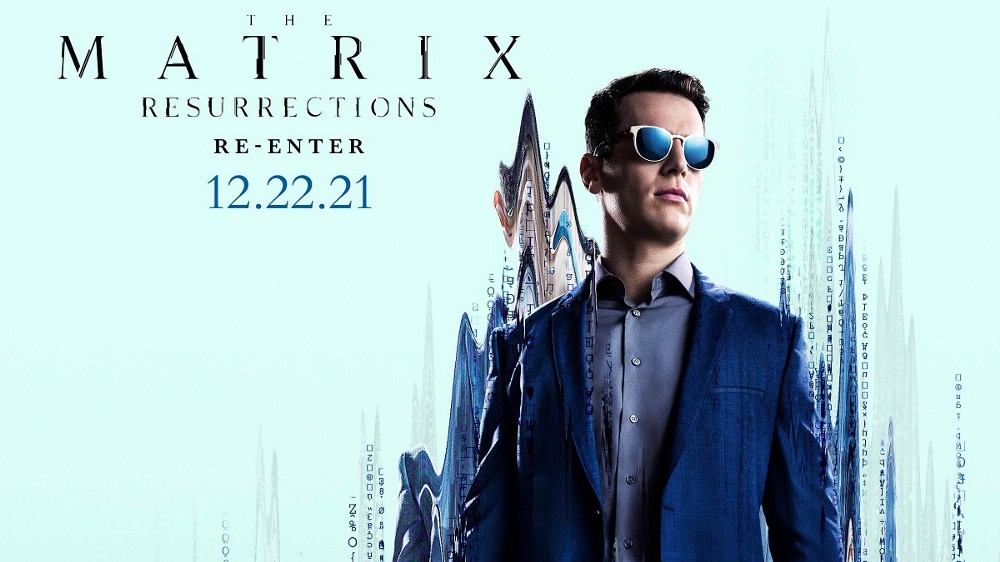
Smith bids farewell to Neo with a reminder that “I’ve always been anyone” and vanishes again to parts unknown. Maybe that’s because The Matrix Resurrections, like every Hollywood franchise these days, has to tease a possible sequel. Yet it’s far more entertaining to think of him as a fully liberated program with a future of his own. Where does he disappear to while all the dive-bombing and shooting is going on? Is he somewhere literally watching his world burn, lighting up another cigarette? Does he have some other goal he’s now free to pursue? When Trinity and Neo talk about rebuilding the Matrix at the conclusion of the film, it’s impossible not to think about what role Smith could potentially play in that — if they want him to and he chooses to. Smith has learned the power of choice through Neo, and it’d be full circle if he knowingly chose to help rebuild a better Matrix with the people who’ve been his adversaries for so long. And once it’s rebuilt, then what?
There’s the happy ending, of course, with the peaceful Matrix like we had for at least a little while at the conclusion of the original trilogy. It’s fun to think of Smith as a co-architect of that, potentially left to oversee the new system if the humans then get out. Or he could end up like Office Space’s Milton, where he goes off to a virtual beach somewhere with a margarita. (That should have been the real post-credits scene.) But that would bore him eventually — Smith has so much ambition now, and so much energy, that one figures he’ll find a new mission for himself. Groff has re-energized the character so that we know he could do some amazing things, the keyword always being if he chooses to.
We would never think of him as a hero if Jonathan Groff hadn’t played him.
But that’s exactly what Agent Smith is at the end The Matrix Resurrections. He’s a literal hero for coming to Trinity and Neo’s aid with The Analyst and giving them a head start on their escape. And he’s a hero metaphorically because of the journey that Groff takes him through — he’s fought for and kept his freedom, getting to face the overlord who took it from him in the first place. He will always be an antagonist to Neo, but he doesn’t have to be a villain.
Hugo Weaving was perfect for the original iteration of Smith as a character who by his very function wasn’t supposed to change. He was a representation of conformity in every way: the archetype of the big, scary man in the black suit, which is the picture of what we imagine the “evil government,” in this sense The Matrix, to be. He was always The Other and he did it impeccably. The film acknowledges this when Morpheus tells Thomas that he’s coded from “two forces that helped you become you — Morpheus and Agent Smith.” Even Neo subconsciously recognizes the effect that Classic Smith had on who he is.
But now it’s time to turn the tables. Jonathan Groff gives us a Smith where the primary question is how much influence Neo has had on him. In which we see, and feel, the other side of the equation. We understand more, we empathize more, we have a palpable reaction to this character who originally existed to be despised and defeated. The Matrix Resurrections can talk all it wants about freedom, but it’s Groff’s performance that is the most free and thus illustrates the themes of the movie in a really beautiful way. He leaves us wanting more and thinking about how Smith will continue to evolve — because he will.
It’s also intriguing to think of what this means for Jonathan Groff’s career. He’s always been talented, but he’s continued to grow and get better over the last few years with leading Mindhunter and now a scene-stealing part in a blockbuster movie. He deserves a look for a future action role. Could you imagine what Groff would have done with material like Strike Back or Berlin Station? He’s proven he has the ability— now he deserves the opportunity to take the next step. Or at the very least, more prominent movie roles ought to come his way if he wants them.
Smith’s success as a character has come from the actors who play him. Hugo Weaving did the most with what he was given within a very specific framework and that’s why fans remember his version and have loved it so much. Jonathan Groff broke the character out of that framework. He made it so that Smith can never go back. His impact is surprising, and fun, and so far beyond what anyone could have asked for. Groff deserves tremendous credit for not only rising to the challenge of The Matrix, but making Smith the character that he always deserved to be.
The Matrix Resurrections is in theaters and on HBO MAX now.